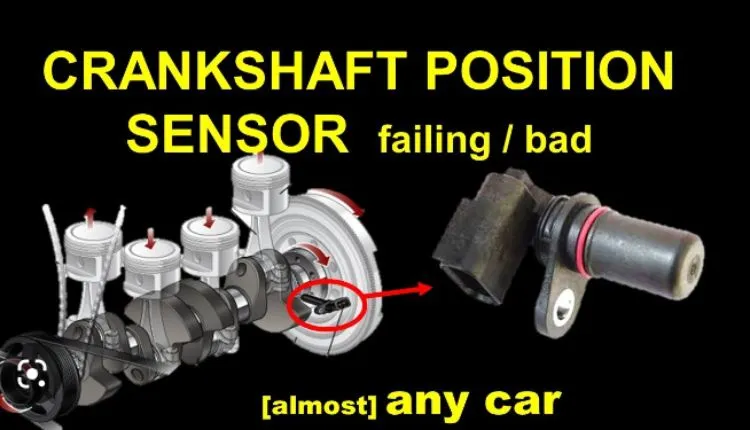What Is A Crankshaft Position Sensor?
A crankshaft position sensor (also known as a CKP) is an important electronic device that helps your car’s engine run smoothly. It helps your vehicle manage fuel injection and ignition, ensuring optimal performance and longevity. Your engine control unit uses the information from a crankshaft position sensor to make adjustments to your car’s engine. If your crankshaft position sensor starts failing, you’ll need to have it replaced as soon as possible.
It Measures The Crankshaft’s Position
A crankshaft position sensor is a part of your car’s engine management system that monitors the position and rotation speed of the crankshaft. This information is used by the vehicle’s computer to control ignition timing and fuel injection. The crankshaft position sensor is typically mounted behind the harmonic balancer on your engine. It’s a small device that uses pulse detection to measure the crankshaft’s position and rotation speed.
As the toothed reluctor ring passes by it, the sensor detects the action and generates a series of electrical pulses. These pulses are converted into a square wave signal that the engine’s computer uses to determine the position and rotational speed of your crankshaft. This square wave signal is then converted into an output tachometer signal the instrument cluster uses to display your engine’s RPM. A faulty crankshaft position sensor can trigger your check engine light, so it’s important to diagnose it immediately!
It Gives The Engine Control Module A Timing Reference
Crankshaft position sensors give the Engine Control Module a timing reference so it can time fuel injection (diesel engines) or spark ignition (petrol engines). A failed sensor will cause an engine to not start or cut out when it’s running. A crankshaft position sensor is a magnetic pickup mounted either in the engine block, close to the flywheel or on the crankshaft itself. It reads notches machined in a reluctor ring or a crankshaft ring and sends an alternating current signal to the engine control unit.
Regardless of type, the CKP can be damaged by faulty circuitry or broken wiring in the sensor harness. It can also fail because it receives incorrect signals from other sensors.
It Tells The Engine How Fast It’s Turning
All of the parts in an engine have to operate together like clockwork. The crankshaft and camshaft turn, the pistons fire fuel air mixture and a series of sensors measure all this in real-time. These sensors work by picking up a small electrical current based on fluctuating magnetic fields. The engine computer uses this information to calculate ignition timing and fuel injection timing. This signal can also help the engine control module determine cam timing. For engines that have Variable Valve Timing, this is important to adjust the timing of the valves as needed for optimal performance, emissions and fuel economy.
If your car is experiencing rough idling or if you’re getting check engine lights, the crankshaft position sensor may be broken or malfunctioning. This will cause improper engine rotation and inefficient fuel use, so you’ll notice less gas mileage.
It Helps The Engine Run Smoothly
The crankshaft position sensor helps your engine run smoothly by relaying critical information to your vehicle’s computer, visit here suncentauto.com. This information allows the car’s computer to control ignition timing, fuel injection, and other critical functions. If the crankshaft position sensor fails, you may notice acceleration issues or a rough-running engine, as well as poor fuel mileage. This is because the engine control unit can’t make acclimations to ignition and fuel injection as it accelerates, due to an imprecise signal from the sensor.
To help diagnose a bad crankshaft position sensor, you should inspect the sensor itself and the ring that it sits on (called the reluctor ring) to ensure there is sufficient gap between them.
What’s Next?
This gap is usually about 1mm +- 0.4mm. If you notice a gap that is too large, your crankshaft position sensor may be faulty and should be replaced. It’s a fairly straightforward repair that’s inexpensive on most mainstream vehicles.
